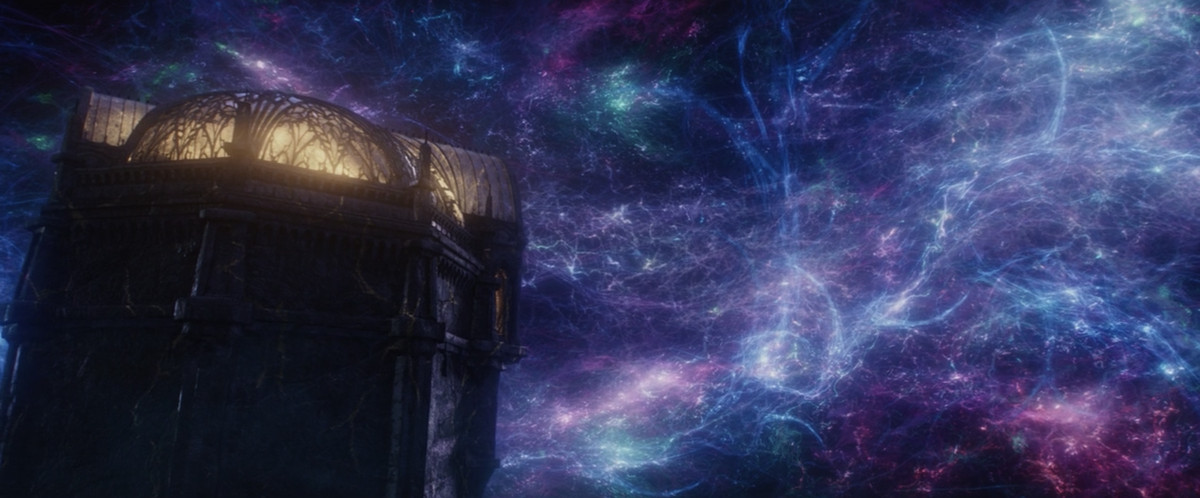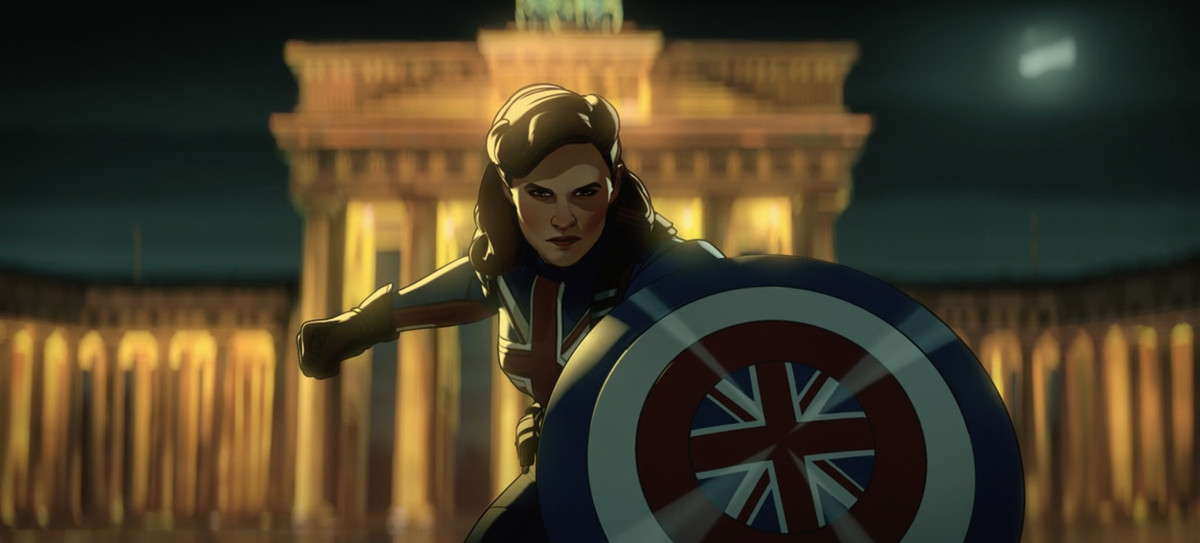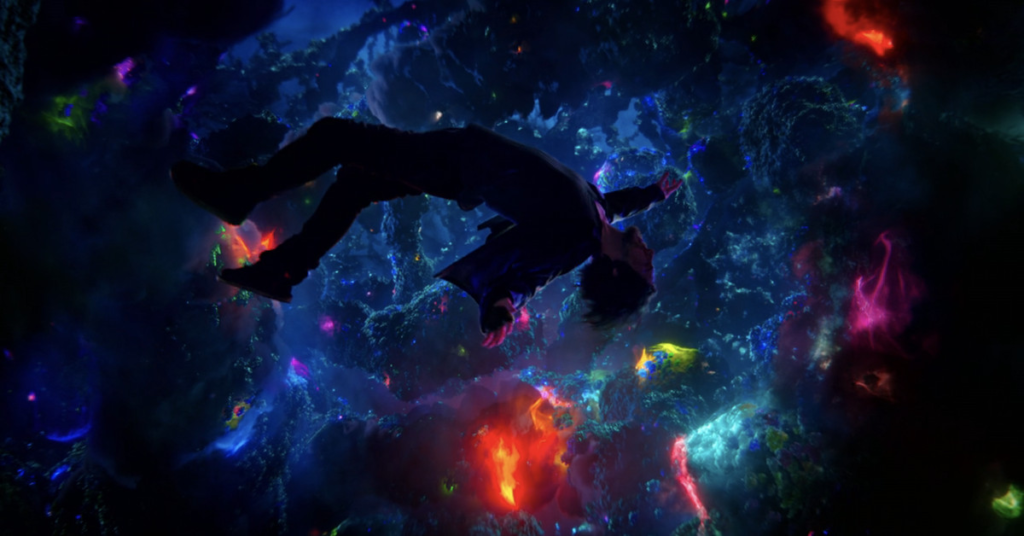In another universe, Doctor Strange in the Multiverse of Madness would have arrived in crowded theaters across the world almost exactly a year ago, a few months after WandaVision premiered on Disney+ to help set up the blockbuster movie. Thanks to the pandemic, however, the film faced multiple delays, and other projects shifted ahead of it on Marvel’s Phase 4 slate. Now, more than five years after the release of 2016’s Doctor Strange and nearly three years since Benedict Cumberbatch and Elizabeth Olsen helped announce its sequel at the 2019 San Diego Comic-Con, Multiverse of Madness finally arrives on Friday.
Twenty years after Sam Raimi directed the industry-shifting Spider-Man, the filmmaker returns to helm another Marvel movie. Following Doctor Strange director Scott Derrickson’s departure from Multiverse of Madness in early 2020 because of “creative differences,” Raimi was entrusted with the reins of a movie that was teased as a mind-bending journey across the multiverse that would weave in elements of horror that the MCU has never seen.
The long-awaited sequel is set to tie in characters and plotlines from past MCU films and TV shows alike, even more so than the standard Marvel affair. So ahead of its release on Friday, a refresher is in order. Let’s take a look back at the many projects that have set the stage for Multiverse of Madness and what they can tell us about Doctor Strange’s next chapter. (Note: There won’t be any spoilers below for Multiverse of Madness, or at least nothing beyond what already has been revealed in the film’s overabundance of trailers, but everything else that’s come before it in the MCU is fair game.)
Doctor Strange
Screenshots via Disney
A year before Doctor Strange hit theaters, Ant-Man introduced MCU viewers to the Quantum Realm, an alternate dimension that Scott Lang reaches by shrinking his body to a subatomic level. Within moments of meeting the Ancient One in Doctor Strange, Stephen Strange visits the Quantum Realm and beyond. The Sorcerer Supreme takes the unsuspecting former surgeon on a psychedelic tour across the multiverse to show him how little he understands of the true nature of his existence. The Ancient One, Wong, and Baron Mordo help teach Strange the ways of the mystic arts, including how to draw energy from other dimensions across the multiverse without breaking the fundamental laws of nature. (Of course, the Ancient One has secretly been drawing energy from the Dark Dimension to extend her life. Despite the fact that she’s centuries old, nobody ever questioned how she was doing it.)
By the end of the movie, Strange transforms from a novice into the world’s only hope against a scary, purple space entity named Dormammu, who brings the Dark Dimension to Earth and threatens to consume all of humanity in the process. Strange manages to trap Dormammu in a time loop and then strike a bargain with him to leave Earth alone, but doing so forces Strange to break that inviolable rule of not tampering with the natural order of life. Mordo leaves behind the Masters of the Mystic Arts in response to Strange’s manipulations of nature—and his discovery that the Ancient One had been doing the same—but not before reminding Strange that actions never cease to have consequences: “The bill comes due, always … a reckoning.”
Along with the mystical doctor, several characters from Doctor Strange will be returning for the sequel, including his ex-girlfriend Dr. Christine Palmer (Rachel McAdams), Dr. Nic West (Michael Stuhlbarg), and the current Sorcerer Supreme, Wong (Benedict Wong), who was granted the lofty title after Strange disappeared during the Snap. Crucially, Mordo (Chiwetel Ejiofor) is also back for the first time since his post-credits scene in Doctor Strange, in which he denounced the Masters of the Mystic Arts altogether: “I see what’s wrong with the world … too many sorcerers.”
Despite being an ally and something of a mentor to Strange in their cinematic debuts, Mordo returns in Multiverse of Madness in what appears to be his villainous role in the comics, as one of Strange’s archenemies. It took a while for that bill to come due, but Strange’s reckoning has arrived. And if Mordo was mad about Stephen breaking the rules to save the entire planet, just wait until he hears about what the guy did during the events of Spider-Man: No Way Home. (More on that in a moment.)
WandaVision

When Multiverse of Madness was announced in 2019, Marvel Studios president Kevin Feige revealed that WandaVision would help set up the film, with series star Olsen reprising her role as Wanda Maximoff. WandaVision, which went on to earn 23 Emmy nominations (and three wins), premiered as Marvel Studios’ inaugural Disney+ series in early 2021, and its action-packed finale introduced the Scarlet Witch in earnest and paved the way for her return in Multiverse of Madness.
Hidden beneath its sitcom sheen, WandaVision is a story about Wanda processing a lifetime of grief, from the deaths of her parents during her childhood in Sokovia to that time when she had to kill her own husband—just for Thanos to kill him again in front of her eyes. All of that trauma leads Wanda to take the entire town of Westview, New Jersey, hostage as she uses her magical abilities to transform it into an idyllic reality where Vision is alive and the happy couple can have children. (Well, idyllic for Wanda, at least; those Westview residents suffered a lifetime of trauma of their own.)
In addition to depicting Wanda’s emotional arc, WandaVision finally bestows her title from the comics: Scarlet Witch. The Scarlet Witch is an all-powerful being capable of Chaos Magic, giving her the gift of spontaneous creation. As the witch Agatha Harkness tells her in the series finale, Wanda’s “power exceeds that of the Sorcerer Supreme,” and “it’s [her] destiny to destroy the world.”
By the end of WandaVision, Wanda’s fantasy in Westview is put to an end, her children gone with it. But she leaves in possession of the Darkhold, an ancient and evil source of dark magic also known as “the book of the damned.” One of the finale’s post-credits scenes shows Wanda relocated to a remote cabin surrounded by snowy mountains and enjoying a cup of tea as she simultaneously projects herself to the Astral Plane to study the Darkhold further. As the scene comes to a close, cries from Wanda’s twin boys can be heard as the Doctor Strange theme music hints at where her story will continue.
As Wanda’s return looms in Multiverse of Madness, she brings the baggage of an ominous new title (and the world-ending prophecy that comes with it), an even more ominous book as her preferred reading material, and a desire to bring her boys back to life—for real this time. If there’s any MCU project to revisit before hitting the theater this weekend, aside from Doctor Strange, WandaVision would be the one.
Loki and Spider-Man: No Way Home

The multiverse is having a moment in film and on TV (best portrayed by A24’s Everything Everywhere All at Once), and the concept has become central to the MCU in Phase 4. Multiverse of Madness will build off of two multiverse narratives released last year: Loki and No Way Home.
Even though Doctor Strange helped introduce the concept well before Loki came out, the latter serves as something of a primer for the Marvel multiverse (and, according to Kevin Feige, made this multiversal storytelling possible). Loki follows the Asgardian trickster god as he gets a second (or is it his fourth?) chance at life and avoids the timeline in which he eventually gets killed by Thanos in Avengers: Infinity War. By skipping out on his predetermined future, Loki earns a trip to the Time Variance Authority, an interdimensional bureaucracy that governs the Sacred Timeline. It’s the TVA’s job to eliminate, or “prune,” any individuals who deviate from their destinies on the Sacred Timeline, known as “variants.”
After uncovering the secrets and lies behind the construction of the TVA, Loki discovers that the Sacred Timeline was created by a man simply known as He Who Remains as a means of ending a Multiversal War wherein evil variants of himself from across the multiverse attempted to conquer each other’s universes. When Sylvie, a Loki variant, kills He Who Remains in Loki’s season finale, the Sacred Timeline splinters into branching timelines, and a new multiverse of chaotic possibilities is unleashed. It remains to be seen how or whether Sylvie’s choice will impact Multiverse of Madness, but with Loki head writer Michael Waldron also responsible for the film’s script, there’s a tighter connection between the two projects than there is among others. Just as Loki introduced multiple variants of the trickster god, from President Loki to Gator Loki, Multiverse of Madness will feature versions of Strange from alternate realities, including an evil variant known as Sinister Strange.
Strange didn’t make an appearance in Loki, but he played a crucial role in No Way Home. And by “crucial role,” I mean that the whole multiversal mess in the movie is really his fault. After Spider-Man’s secret identity is revealed to the world, he recruits Strange to essentially erase the world’s memory of the inconvenient discovery, in large part because the teenager just wants to get into a good college with his girlfriend and best friend. And despite Wong’s warnings, Strange actually helps him! The decision-making is so irrational, and Strange’s handling of the situation so terrible, that theories emerged about him being some sort of evil variant. (Unless Multiverse of Madness says otherwise, the reality appears to be that Doctor Strange nearly sacrificed the entire world for Peter Parker’s college admissions process.)
While the Loki and No Way Home story lines may or may not end up impacting the upcoming film, together they serve as the perfect multiversal appetizers for Multiverse of Madness.
What If…?

Perhaps the most surprising inclusion here is What If…?, the animated anthology series that reimagines the MCU by exploring alternate timelines across the multiverse in which major moments from past films turned out differently. When What If…? was released, it wasn’t yet clear how the characters or stories introduced in the anthology would become a part of the greater MCU, but the many Multiverse of Madness teasers have already revealed the film’s ties to the animated series.
The first trailer featured what appeared to be the live-action debut of the Doctor Strange variant from the episode of What If…? that spotlighted a timeline in which Strange’s near-fatal car crash results in the death of Christine, sending him on a dark quest to use the mystic arts to find a way to resurrect her, no matter the cost. (The bill is about as high as it can get in this scenario: Not only does Strange turn himself into a monster in his quest for knowledge and power, but he ends up causing the annihilation of their entire universe. Maybe Mordo has a point about putting a stop to this Doctor Strange guy.) But Cumberbatch recently put that theory to bed, as he revealed that Multiverse of Madness’s Sinister Strange is a different version of the character altogether.
Even still, subsequent teasers and TV spots for the film have also shown zombified versions of Marvel heroes (calling back to the episode, “What If… Zombies?!”), as well as glimpses of Captain Carter, the variant of Hayley Atwell’s Agent Carter who took the super soldier serum instead of Steve Rogers in the What If…? premiere. What If…? may focus on realities outside of the main MCU universe, but the series is also proving to be something of a testing ground for stories and characters, with Captain Carter already getting her own comic—in addition to her upcoming appearance in Multiverse of Madness—and Marvel Zombies spinning off into an animated show of its own.
Along with giving Captain Carter her live-action debut, Multiverse of Madness is set to introduce new characters to the MCU, including the multiversal adventurer and Young Avenger America Chavez (played by Xochitl Gomez), and a secretive supergroup from the comics known as the Illuminati. That means we’ll get the chance to witness Patrick Stewart’s MCU debut as Professor Xavier, as trailers have already revealed, and there could be appearances from Reed Richards, Namor, Black Bolt, or even the return of Robert Downey Jr.’s Tony Stark, albeit a version of him from an alternate dimension. Outside of Xavier, no one else from the group has been confirmed to appear, and given that Stark just recently died in Avengers: Endgame and that Marvel Studios may be withholding the introduction of some of these major comics characters for future projects, the film might also feature a different construction of the group altogether.
Considering Multiverse of Madness incorporates characters from animated alternate universes, the founder of the X-Men, newcomers from the comics, and figures from some of the most popular MCU releases of the past two years, the blockbuster return of Doctor Strange is set to be one of the most Marvel-centric releases we’ve ever seen. It’s a crossover event on par with the Avengers movies, offering as close to the feel of a major meeting of characters as any MCU project that’s come before. Now there’s just the matter of whether the film can live up to all the hype.

